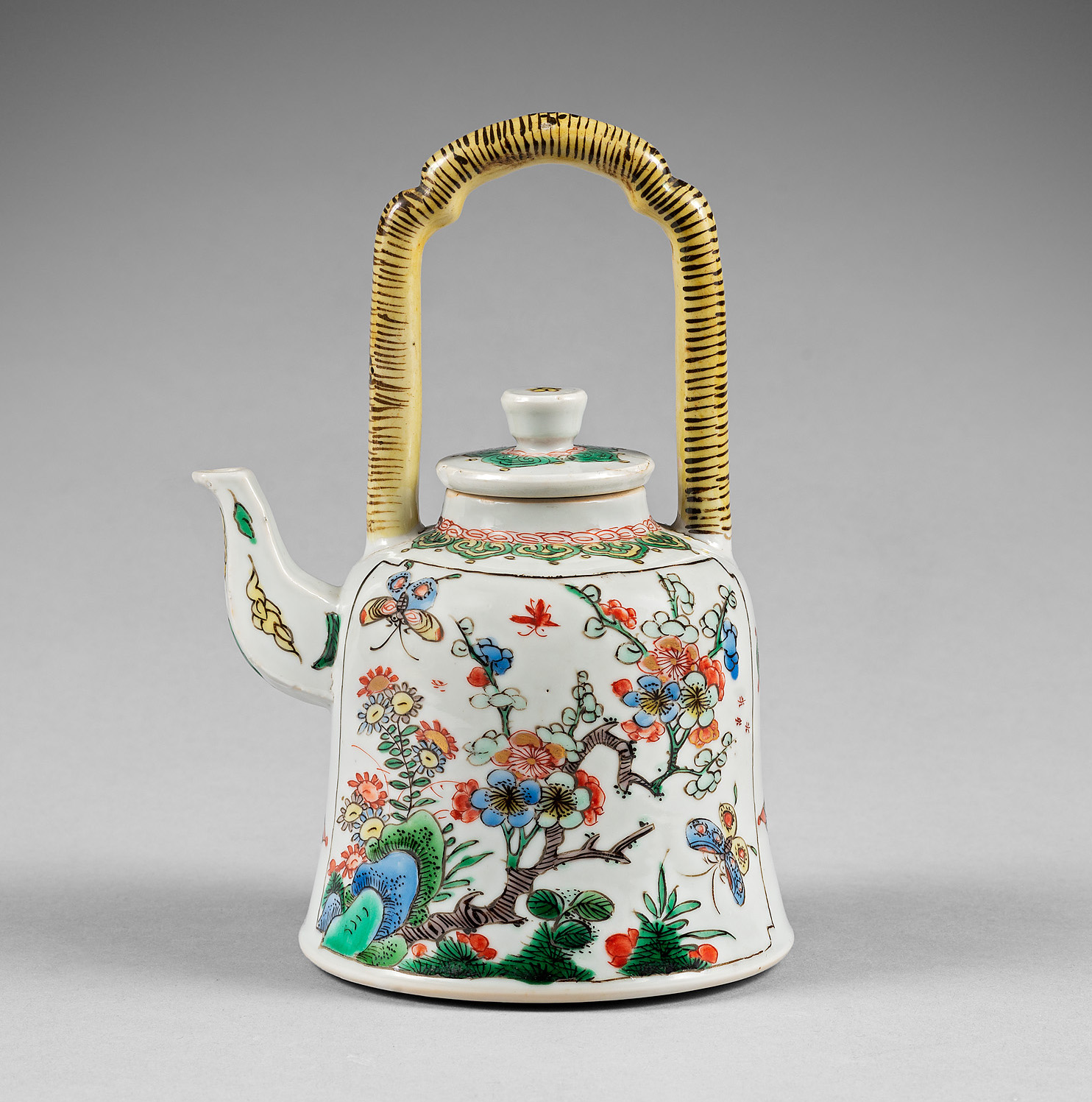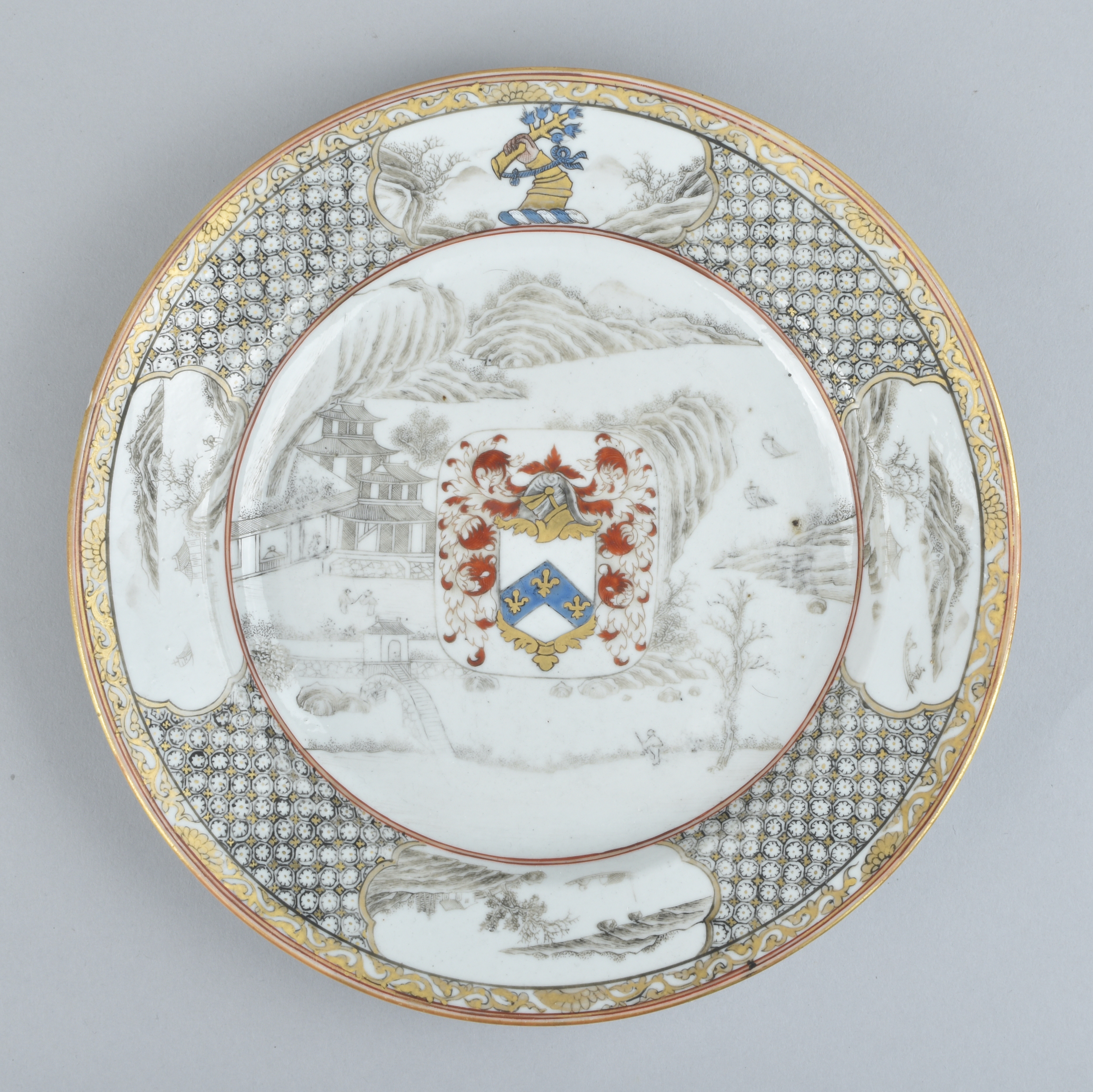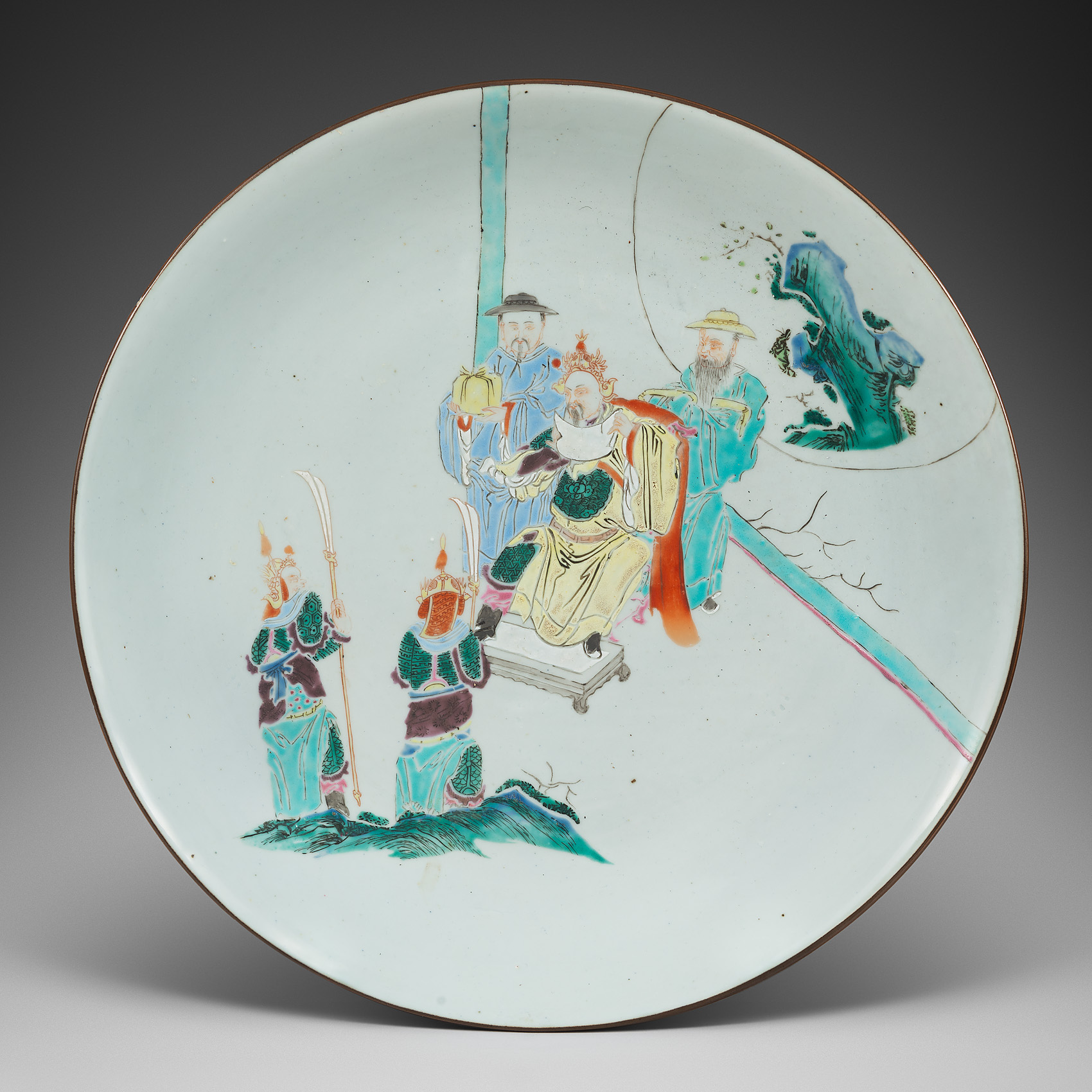
A very massive Chinese blue and white “Folly Fort” platter. Qianlong
The center of the platter depicts a landscape of the Pearl River and the city of Canton far in the distance. The center of the scene presents the Dutch folly fort-one of the old folly forts used as warehouses for Chinese products in the process of being exported to the West. Around the fort can be seen several boats probably transporting cargoes of teas and porcelain coming from inland China. The rim is decorated with a diaper and flowers-head.
This image is based on C. G. Ekeberg’s engraving of 1773. In 1773 Captain Carl Gustav Ekeberg published his recollections of several trips to Canton in the service of the Swedish East India Company. This book was illustrated with several engravings based on his own drawings.
- Country:
- China
- Period :
- Qianlong period (1736-1795), ca. 1780
- Material:
- Porcelain
- Dimension:
- 50 cm x 41 cm
- Reference :
- E334
- Status:
- sold
Related works
An identical platter is in the collections of the Peabody Essex Museum (inventory number 85349), and published by William Sargent in Treasures of Chinese Export Ceramics from the Peabody Essex Museum, 2013, no. 52, pp. 145/146.
For two large blue and white platters, see Luisa Vinhais & Jorge Welsh, A Time and A Place: Views and Perspectives on Chinese Export Art, 2016, no. 75.76.
For a blue and white saucer, see C.J.A. Jörg, Porcelain and the Dutch China Trade, 1982 The Hague, cat. 18, p. 70.
Notice
The Chinese constructed two forts in the Pearl River, one on either side of the central par of Guangzhou (Canton). This one and other forts were defensive structures built in the Ming dynasty to protect Guangzhou (Canton). By the beginning of the Qing dynasty the advances in cannonry made them redundant and had fallen into disrepair.
They were later commandeered by foreigners – Dong Paotai (Easter Fort) by the French, and a mile away, Haizhu (Sea Pearl), by the Dutch. Thereafter, they were known as the French and the Dutch folly forts and were used for storage and as bases for the staff as the Europeans were not allowed to live in Guangzhou. The Dutch folly fort was directly opposite the city and only a half-mile from the hongs. The history of the term folly fort is unclear, but it may refer to the assumption that the structure was nonfunctional. While often mentioned by travelers, these sites were not commonly depicted by either Chinese or Western artists.


The Dutch Folly Fort and the Factories.

























